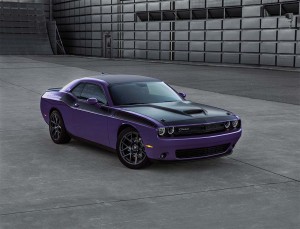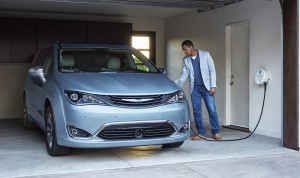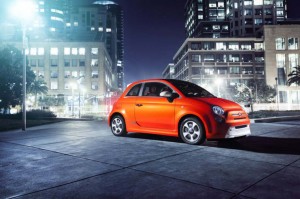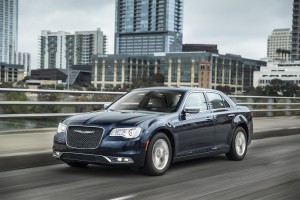It’s been nearly a decade since struggling European automaker Fiat combined with the post-Chapter 11 Chrysler, and if the 5-year plan unveiled during a day-long meeting in Milan last week comes close to being accurate, the carmaker could be in for a “brighter future” than ever, according to John Elkann, the chairman of Fiat Chrysler Automobiles, and the heir to the Italian side of the company’s founders.
There’s just one problem: neither the Fiat nor Chrysler brands seem poised to share in the spoils. The Fiat Capital Day briefing focused all but exclusively on just four brands – Jeep, Ram, Alfa Romeo and Maserati – expected to dominate FCA’s future. For now, Fiat and Chrysler will survive, but in greatly diminished form, and observers question whether they’ll be around for the long-term.
“There was enough doubt…about their future because they barely showed up in the presentations,” said Joe Phillippi, chief analyst with AutoTrends Consulting, after attending the day-long session at Alfa’ proving grounds near Milan. Fca’s management team “took pains to say (Fiat and Chrysler will have a future, at least in the near-term. But it will be up to the next management team to determine whether they will remain in the portfolio for the long-term.”
(Just four brands will dominate the future for FCA. Click Here to learn more.)
Founded in 1925 by Walter P. Chrysler, the eponymous brand has gone through a number of changes, some radical, over the past few decades. As recently as the early 1990s, it was still producing some high-line models like the New Yorker, but it settled back into the mainstream, especially when parent Chrysler Corp. formed an ill-fated “merger-of-equals” with Germany’s Daimler-Benz. The company’s fortunes when that marriage broke up, the carmaker sold to the U.S. equity firm Cerberus which ultimately put it into Chapter 11.
(FCA will offer fully hands-free luxury models by 2023. Click Here for more.)
Chrysler received a massive federal bail-out approved by then-President Barack Obama, but only after Italy’s Fiat came to its rescue. Though in better shape than the U.S. carmaker, Fiat S.p.A. had plenty of its own problems. The Lancia brand was effectively dead. Maserati’s hoped-for revival was stalled, and the future of Alfa Romeo was also uncertain. Even the 118-year-old namesake Fiat brand was struggling in a fast-changing European market, with no presence in the critical U.S.
The corporate strategy announced last week is the third 5-year plan pulled together under the architect of the Fiat Chrysler merger and CEO of FCA Sergio Marchionne. The earlier plans put significantly more emphasis on both Chrysler and Fiat, the latter, Italian-based marque returning to the U.S. for the first time in more than two decades. But things clearly haven’t worked out as planned for either of them.
The Fiat brand moved a grand total of 26,492 vehicles in the U.S. in 2017, a 19% year-over-year decline. And despite steps meant to prop up demand, the numbers have continued to decline. The brand isn’t faring much better anywhere else.
Chrysler, meanwhile, is just a shadow of its former self. Indeed, it’s barely a brand anymore, with just two products, the Pacifica minivan and the 300. And the latter seems all but certain to go away, CEO Marchionne on Friday making it clear that traditional sedans aren’t part of the plan for Chrysler’s future.
But don’t write the two brands off, asserted Marchionne, who described as “nonsense” talk that FCA would abandon either Fiat or Chrysler.
For its part, “Chrysler will (become) a mobility or people-carrier division in the United States,” the executive responded to a question from TheDetroitBureau.com.
The use of the term, “mobility,” was a clear reference to the fact that FCA has been teaming up with Waymo, which is launching a self-driving ride-sharing service. Earlier in the week, the autonomous spin-off of Google announced plans to acquire up to 62,000 the plug-in version of the minivan, the Pacifica Hybrid, which may be one of the key reasons Chrysler could stick around.
Responding to a follow-up question, Marchionne said the Pacifica won’t be Chrysler’s only product, though don’t expect any more sedans or coupes. (For his part, analyst Phillippi expects to see some sort of crossover, perhaps a rebadged version of the Dodge Journey as that brand continues to hone itself down to a muscle car-only division.) But whatever follows, stressed the FCA CEO, Chrysler will be “very much a local brand,” rather than a major global player in the company’s global future.
If some were questioning Chrysler’s v going into the Capital Day meeting, the fate of Fiat was even more uncertain – and not just in North America. And, indeed, FCA officials confirmed that the brand will be radically scaled back. Most of its current models will be abandoned, the carmaker finding no value in continuing to pump money into the development of low-margin commodity products. At this point, only two models will survive: the Panda and even smaller 500.

Dodge will stick around, though it's still undecided what platform will be used for the next-generation Charger and Challenger models.
In fact, the 500 appears likely to shrink even more as it becomes a sub-brand focused along the lines of what Daimler’s Smart brand is today. And, like Smart, the 500 will be going all-electric with the debut of the next-generation 500e. That, Marchionne said, “will find a place in North America,” as well as Europe.
Indeed, after long resistance the push to electrification, FCA is now buying in, and in a big way. There will be electrified versions of all future Jeep models, for example, and even Alfa Romeo and Maserati will get in on the act, though their products will use motor drive technology to boost performance as much as to reduce emissions and fuel consumption.
(Click Here for more on FCA’s electrification plans.)
The challenge for Fiat will be to convince buyers to pay the added price of electric drive. And that won’t be easy, FCA officials acknowledging on Friday that they only expect to recover, on average, about 60% of the cost of their electric propulsion technology. Building volume will be critical to reducing anticipated losses. So, if the new 500e doesn’t gain momentum it will become increasingly difficult to justify keeping it – and, likely, the rest of the brand — in the FCA portfolio long-term.
But that will be someone else’s problem. Marchionne will be gone before the end of the year, leaving it to his successor to decide whether Fiat and Chrysler will really remain part of the FCA portfolio for the long-term.




“…only expect to recover… about 60%…” So, in other words, they are looking at a 40% loss? And is that just Fiat, or FCA?
FCA, and your math is correct.
Sad state in America…. Ford dropping cars to make more SUV’s and Trucks… FCA pushing Jeeps and Minivans… and why?????
Because this country has become a Nation Of Obese Lard Asses that cant fit in cars anymore….
Thank god im thin and fit in my MG MIDGET !!!!
and my New 124 Spider !!!
FUN CARS…. Not vehicles for Lazy Fat Asses…